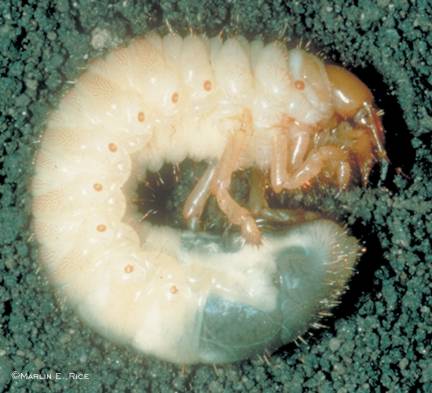Hungry Beetle Larvae are bad news for Lawns
When it comes to lawn pets, it doesn’t get much worse than grubs. These ghastly creatures are beetle larvae that hatch from eggs laid in the soil. Grubs have an insatiable appetite for turf roots, and they’re able to go unnoticed while they feast underground. By feeding on roots, grubs compromise the ability of grass plants to take up water.
What are the Signs?
Lawns under attack from grubs may exhibit any of the following symptoms:
– Irregular brown patches of grass.
– Lawn areas that feel spongy as you walk across them.
– Skunks, raccoons and birds foraging in your lawn (possible looking for grubs to eat).
– Dead turf that can easily be rolled up like a loose carpet.
What is the Treatment?
It’s best to treat your lawn for grubs before damage appears. One way to do this is with a systemic insecticide application. The insecticide will be take up by the roots, killing the grubs as they feed on them. It will be most efficient if applied by mid-August (while beetles are still laying their eggs).
What about the Beetles?
Grubs that make it to adulthood can cause plenty of problems too. For example, adult Japanese beetles (a common source of lawn grub) eat the leaves and flowers of more than 300 plant species. They’re known to “skeletonize” plants by feeding on the tissue between the veins. Various methods of control are available for these beetles, including hand picking, trapping and insecticide spray.
Grubs and beetles can be very destructive, but they can also be managed with regular inspections and proper control. As with most pests, the quicker action is taken the better.



